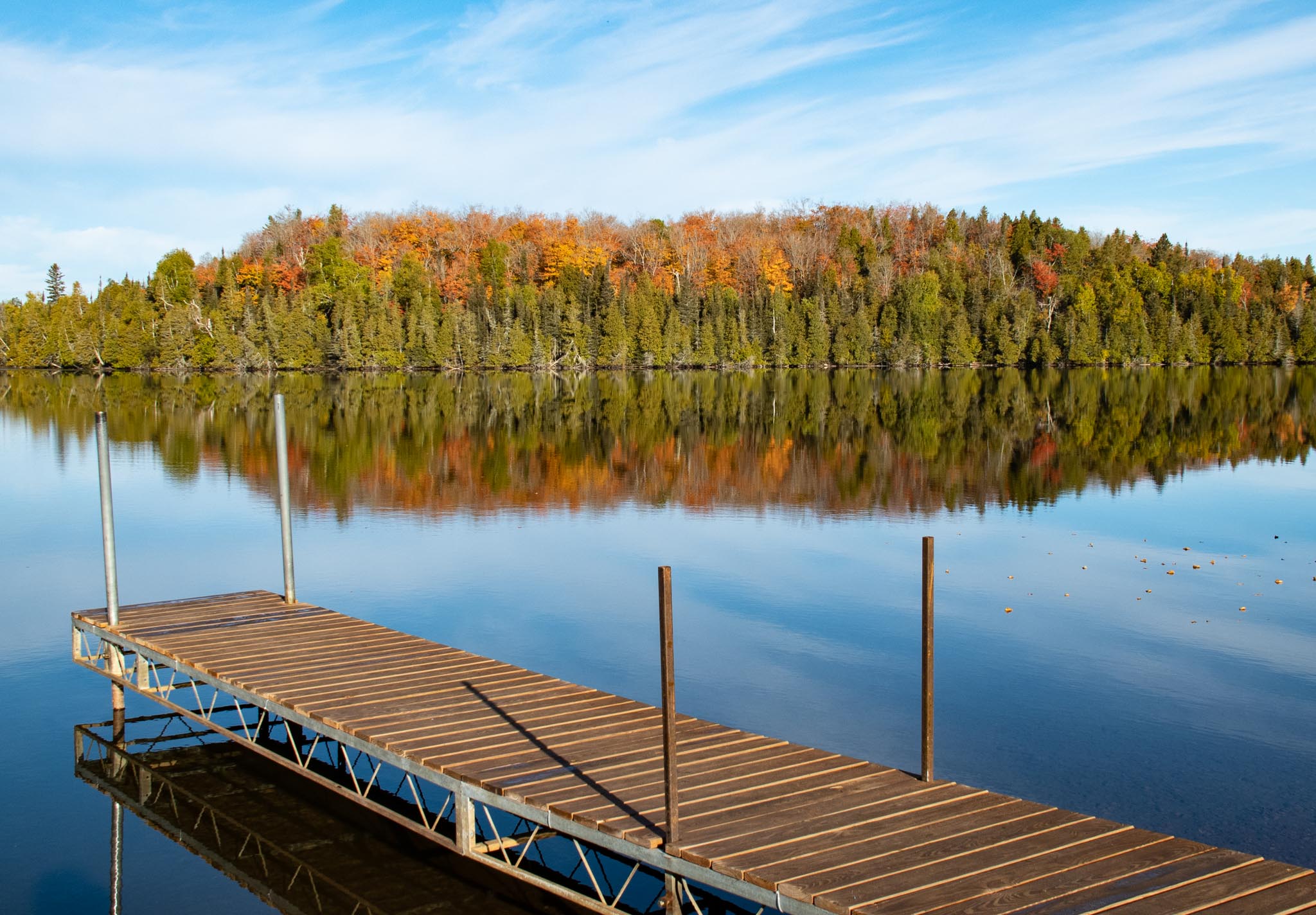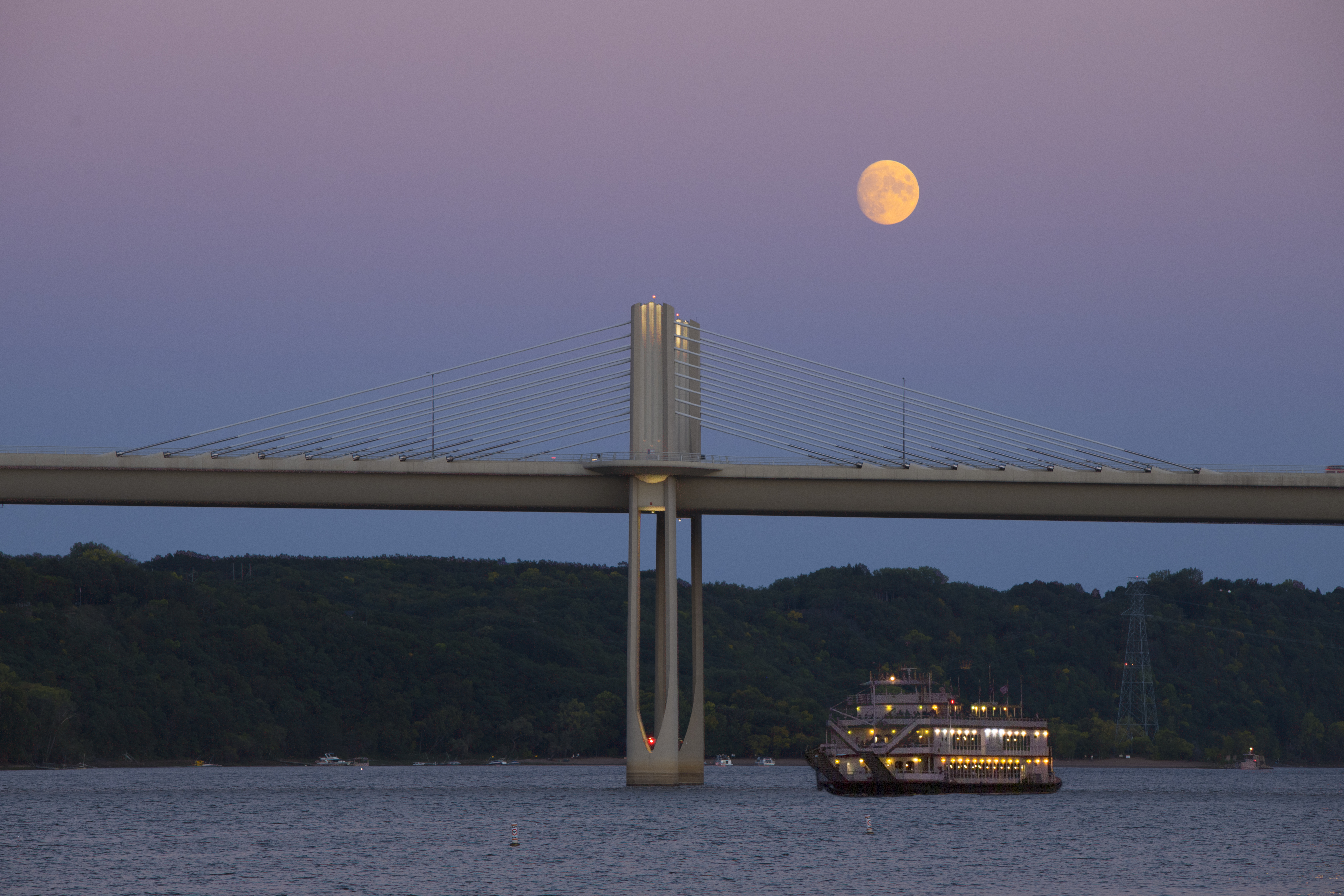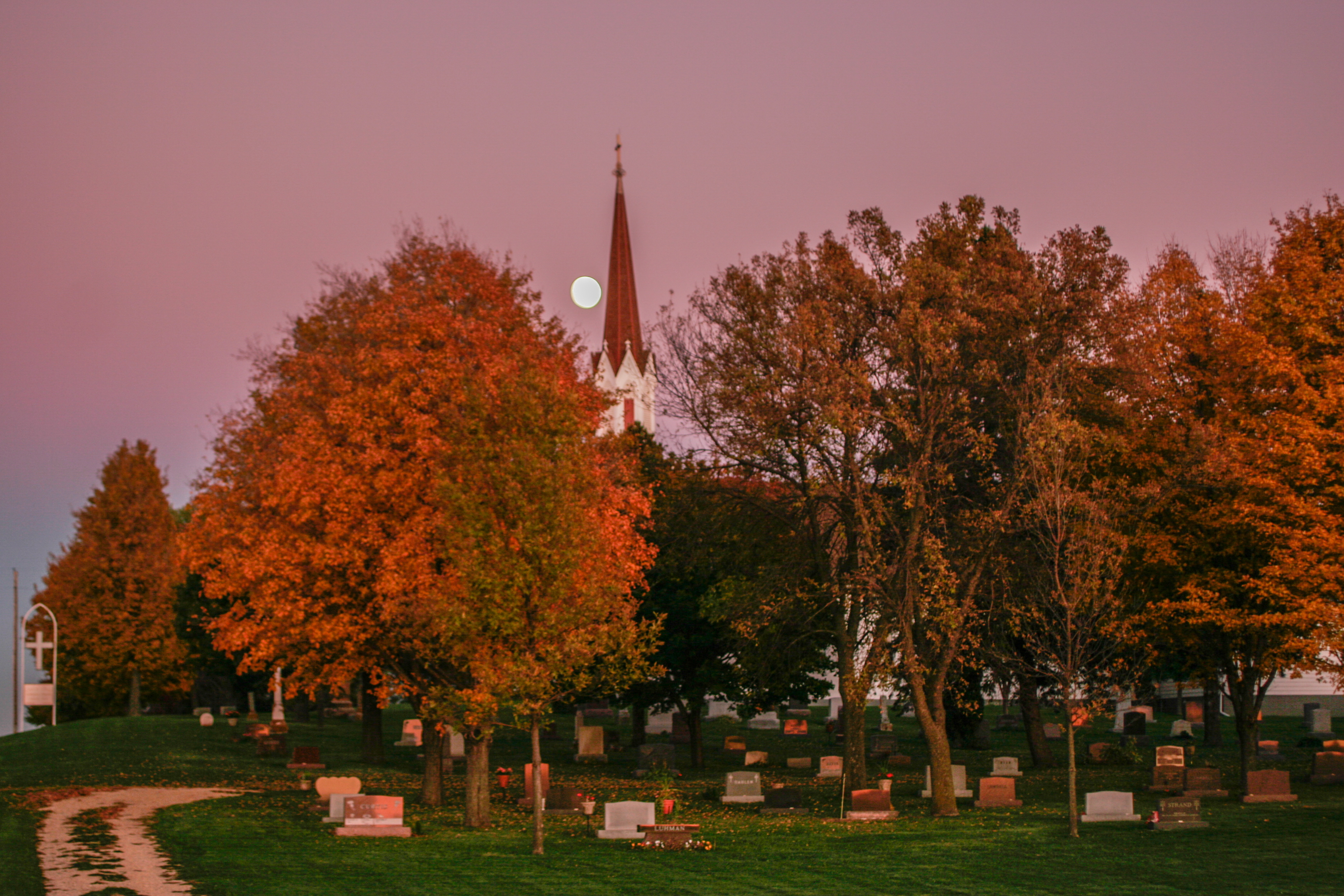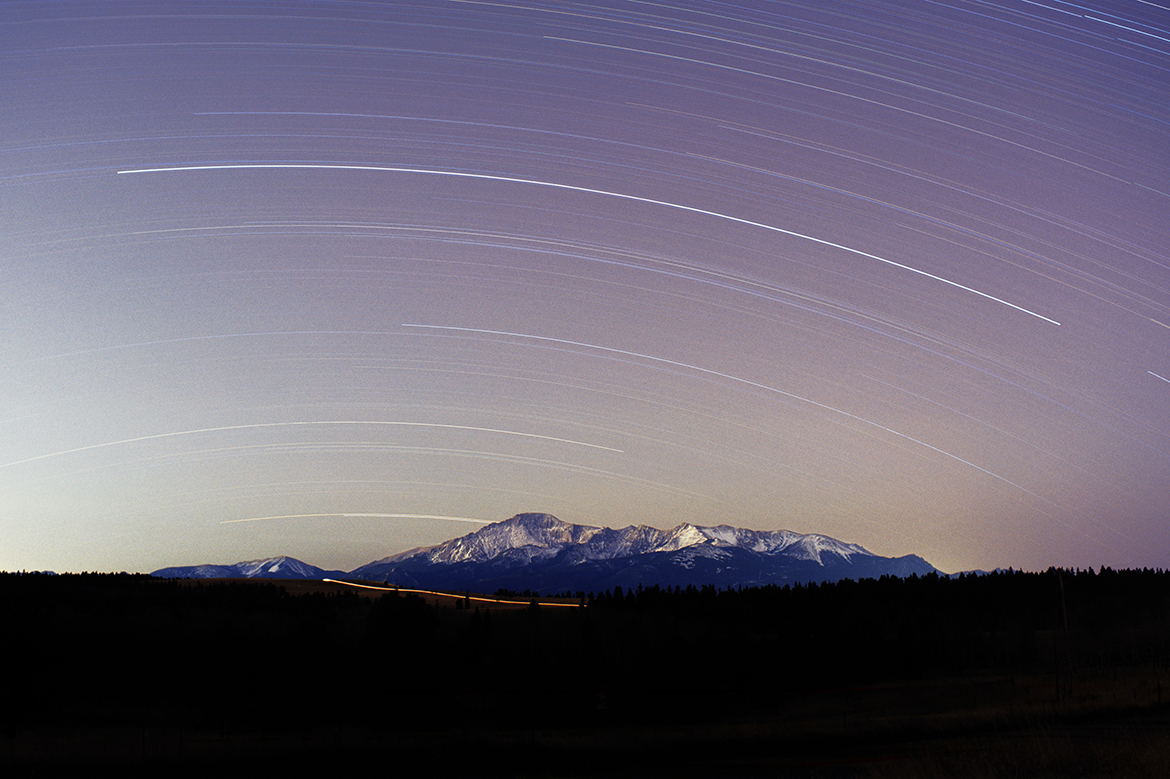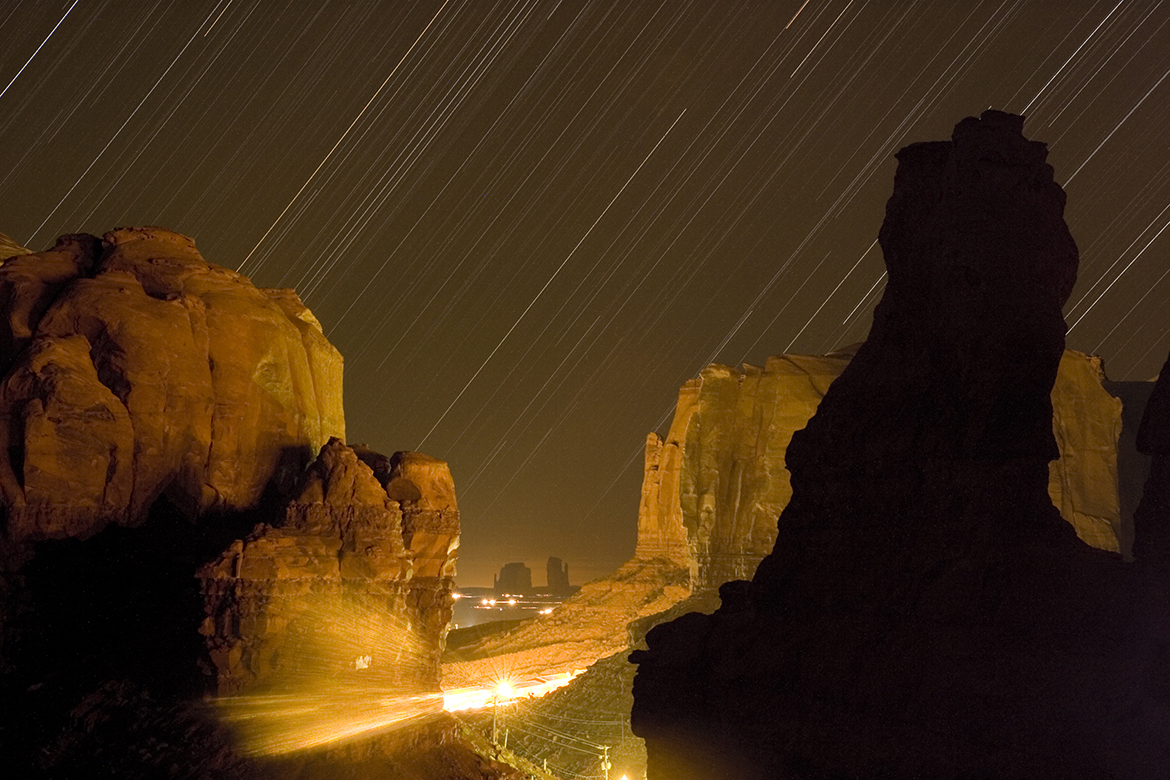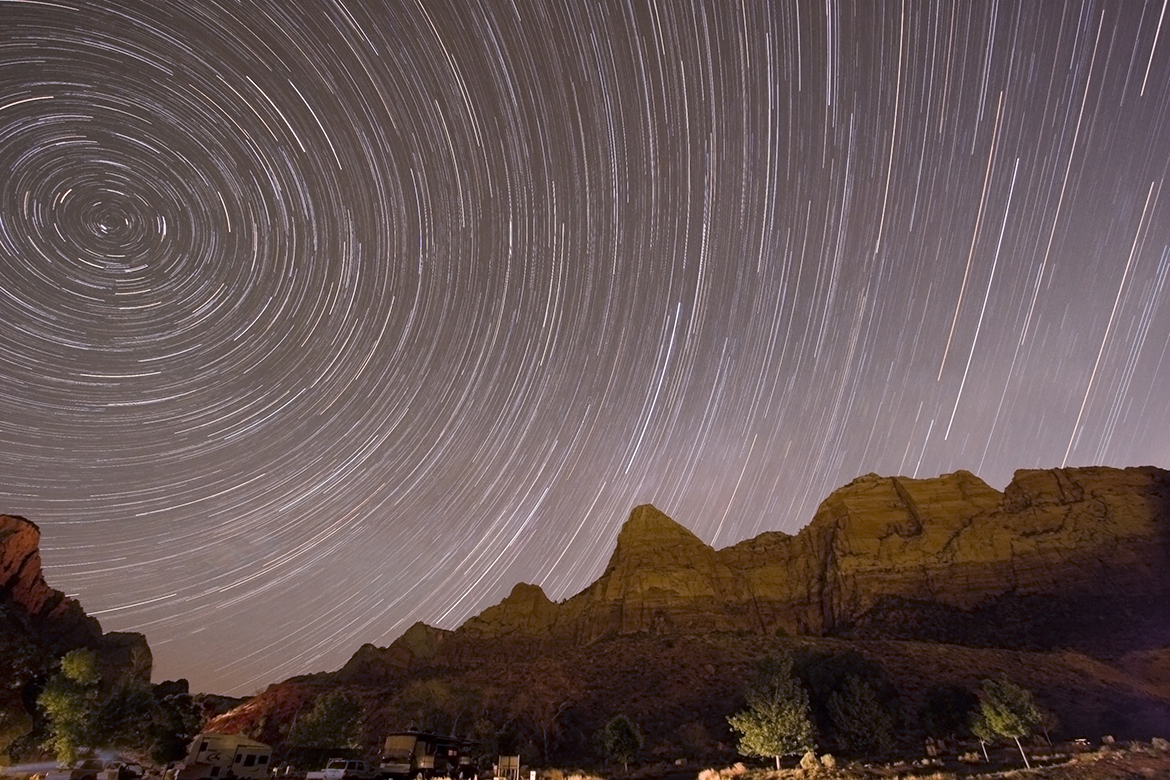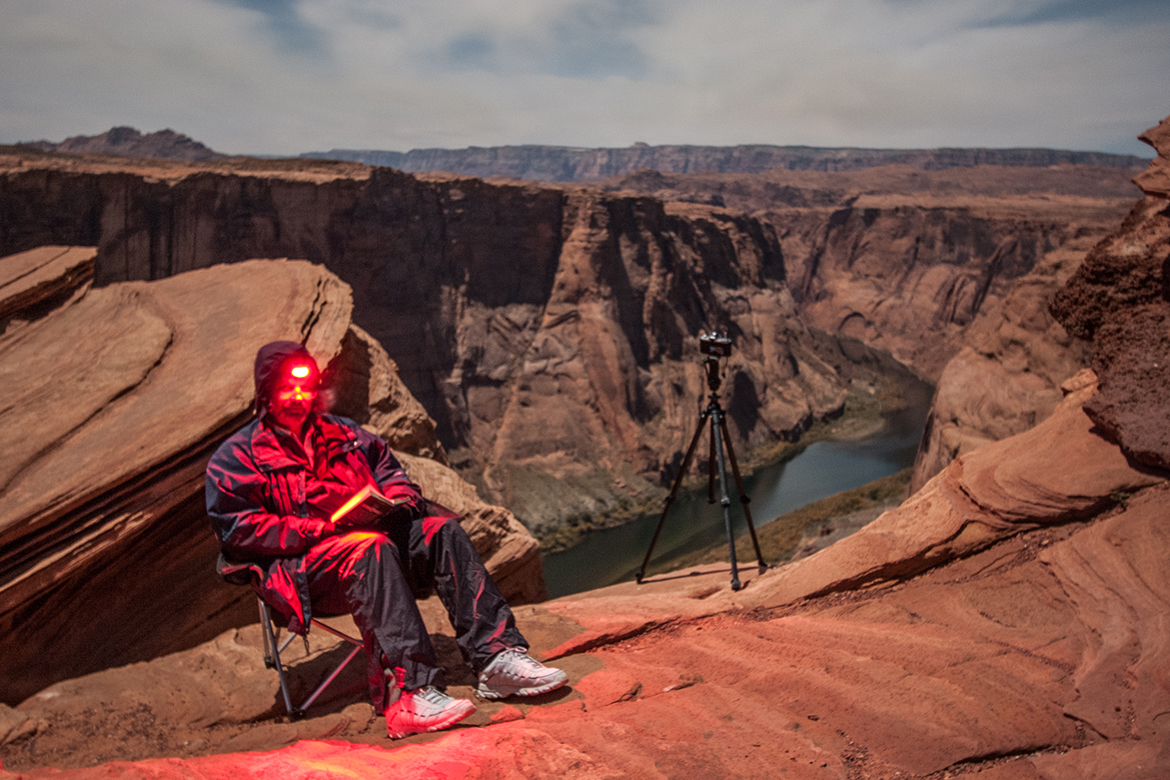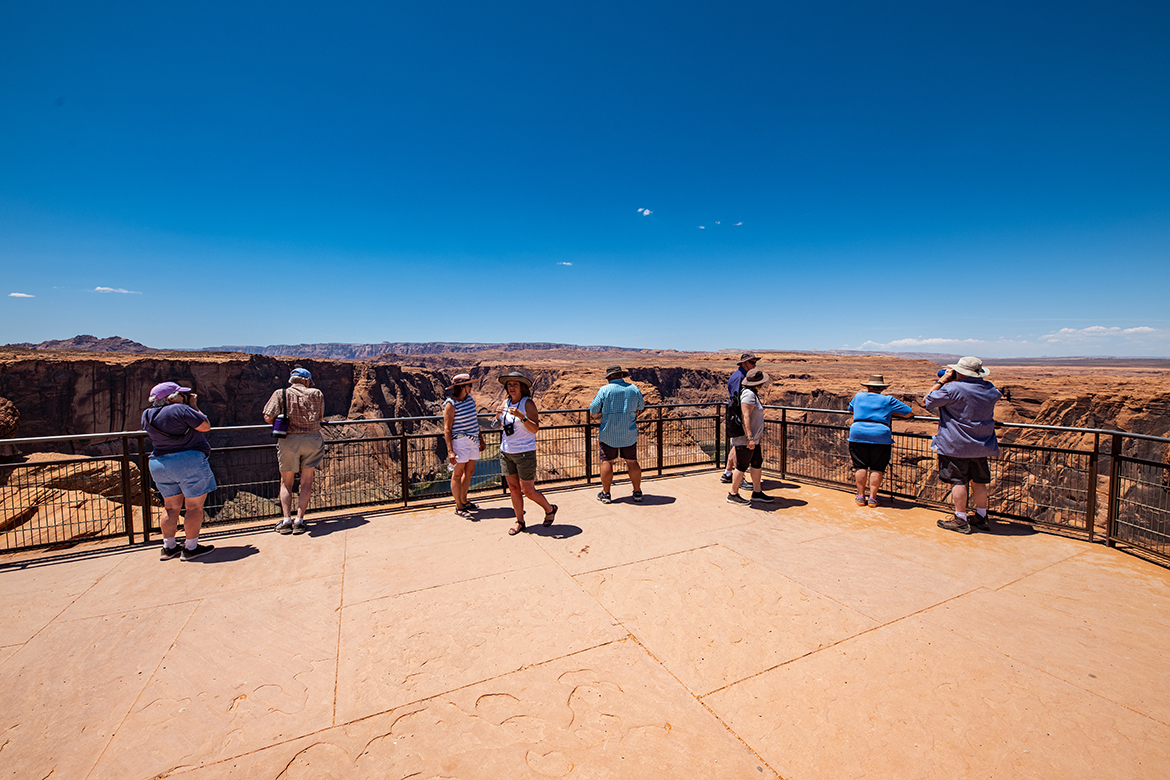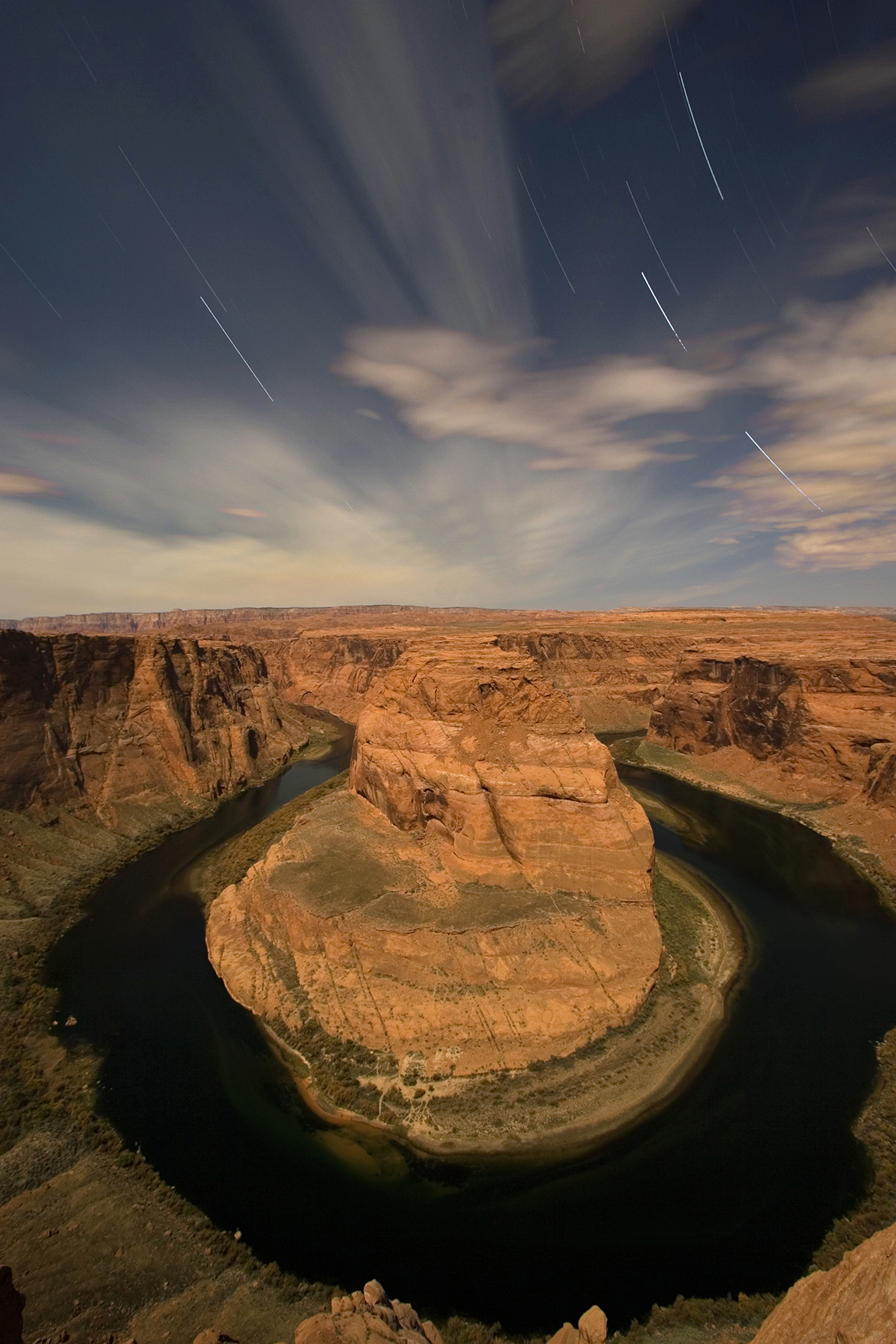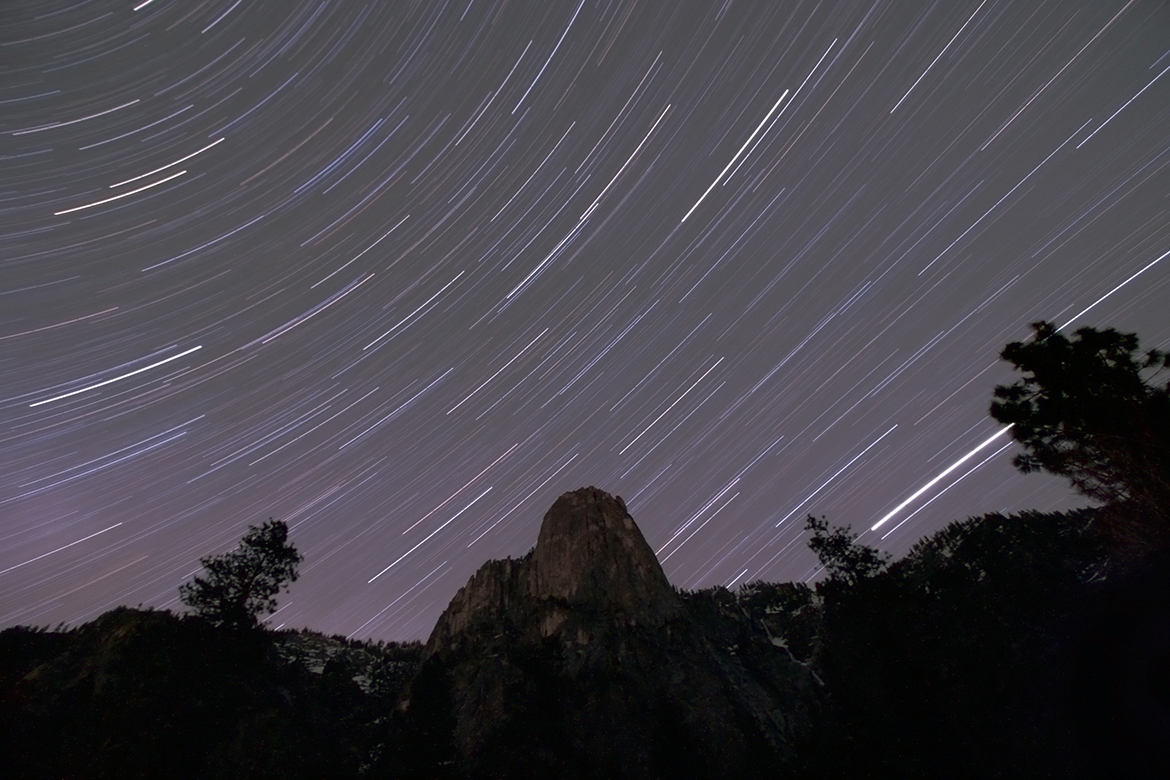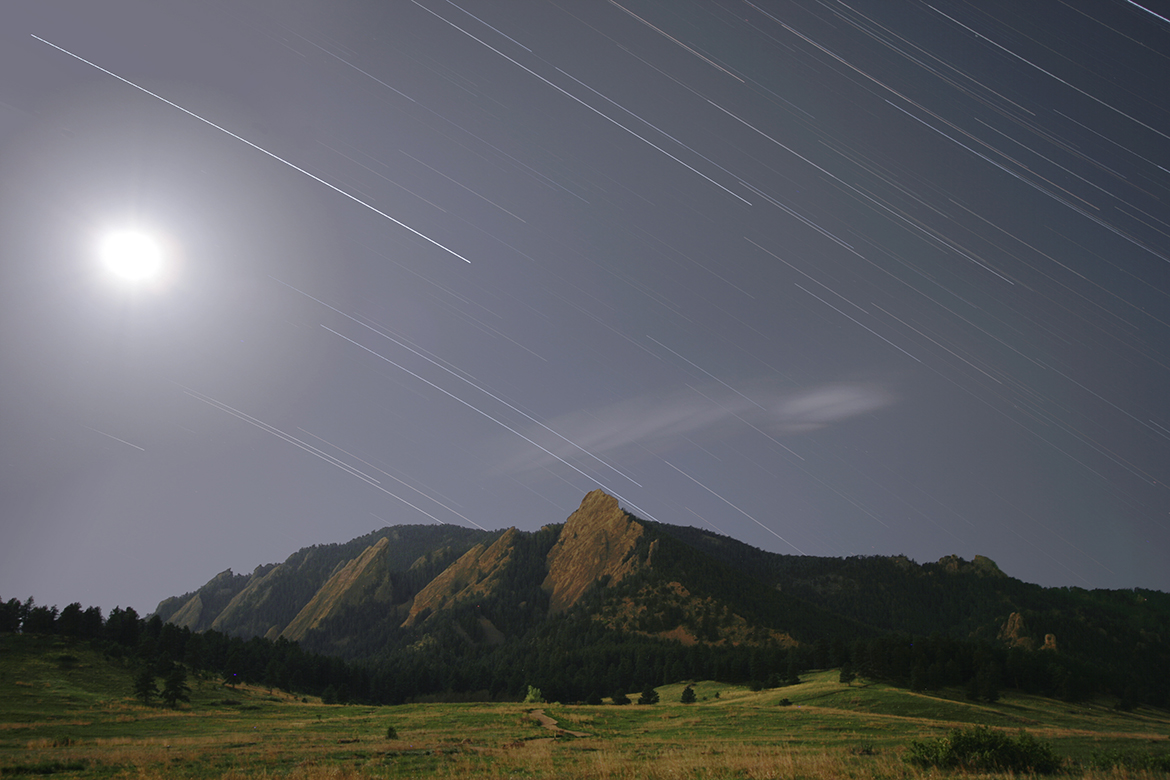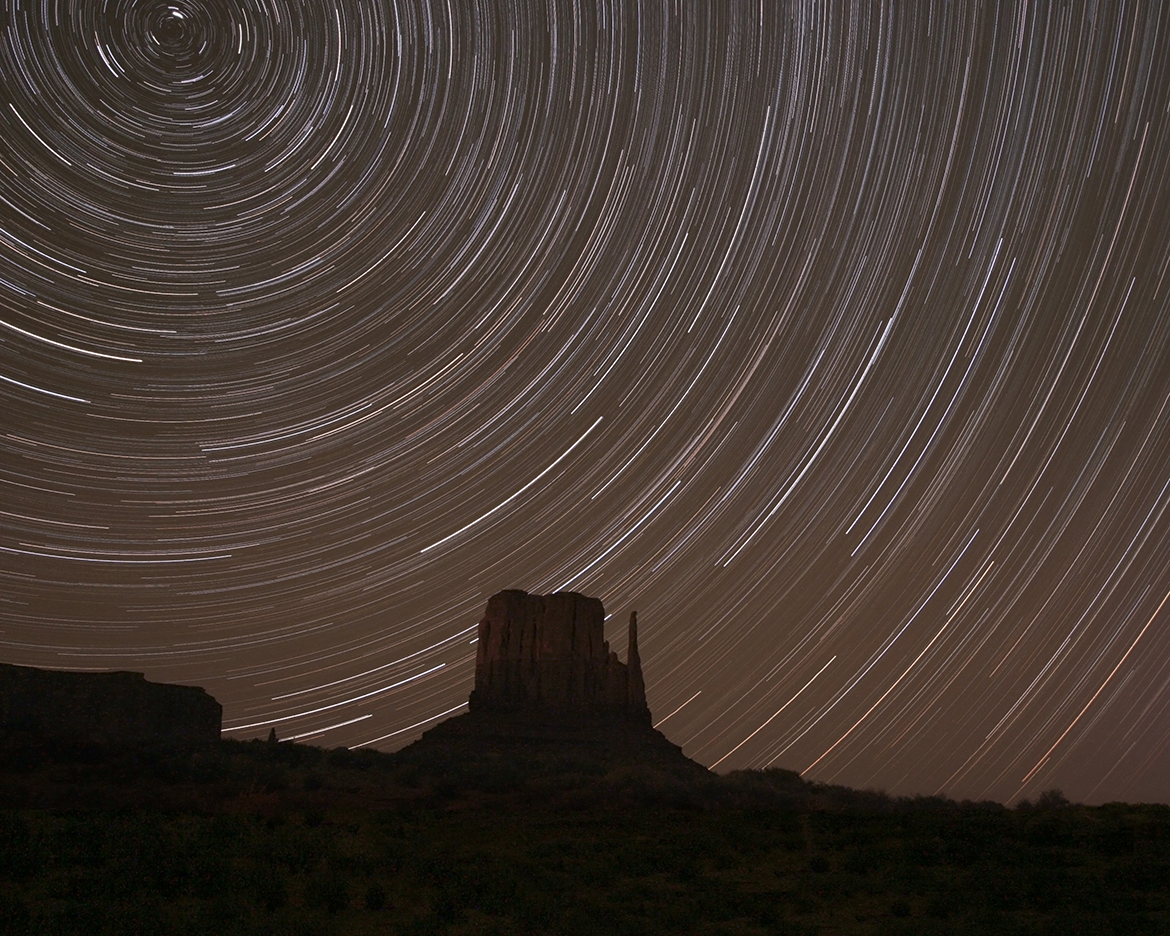
This is a picture I have attempted to capture over many years. At each of my travels to an annual conference, I would take one end of the week to drive to remote corners of Arizona. I shipped my camera and telescope equipment ahead to meet me and would then have a chance to do imaging under the clear, dark and arid desert skies.
The landscape at Monument Valley is unique, but access to the area is restricted. It straddles the Arizona-Utah border and is within the land of the Navaho Nation, that unproductive unwanted area partitioned off to contain the remnants of a people conquered by the westward expansion of a growing country. The land may not be organically fertile, but the landscape is spiritually rich, and many visitors come to see and experience it. The Navaho park around the monuments permit limited tours during the day, and is closed completely at night.
Even so, my first visits allowed me to stay at a campground with a view of the signature shapes of two monuments known as the “mittens”; their offset columns make them look like the thumbs in a pair of mittens. The view was obscured however and a clear night sky portrait would require a viewpoint from somewhere deeper in the park.
The road into the park is a rough cut into the desert floor that is a challenge to just about any vehicle. During the day, the ruts and holes and sandtraps are visible if not always avoidable. At night, access is blocked. To reach the vantage point that would make the picture in my minds eye, I would need to find a way.
On this night, a last chance before I needed to depart for home, I arrived after dark and worked my way to a position I thought would give me that picture. It was an uneasy moment however, and I felt that I was trespassing on sacred ground. I expected at any moment that park security would show up and escort me out. I almost abandoned my plan, but after some time in the dark and quiet, decided that I had traveled far and hard to bring myself to this place, and that I should go ahead and attempt to capture the spirit of the land and sky on that evening.
I set up my cameras and started their exposures. Once started, I waited quietly, watching the Big Dipper work its way behind the monument, like clock hands indicating the time and season. Two cars lumbered and lurched past me on their way to homes further in the valley. It occurred to me that even if they noticed, they would perhaps be more fearful of an unknown vehicle parked darkly off the side of the road than offended by someone taking pictures of their beautiful land.
After five visits and as many unsuccessful attempts, with the help of the ancient Navajo spirits, I was finally able to make this picture of the West Mitten as the landscape rotates under the North Star.
West Mitten
14 Nov 2007
EOS 20Da, EF-S 10-22mm at 20mm
21×300 sec, f/5.6, ISO 800
previous | nightscapes index | next

